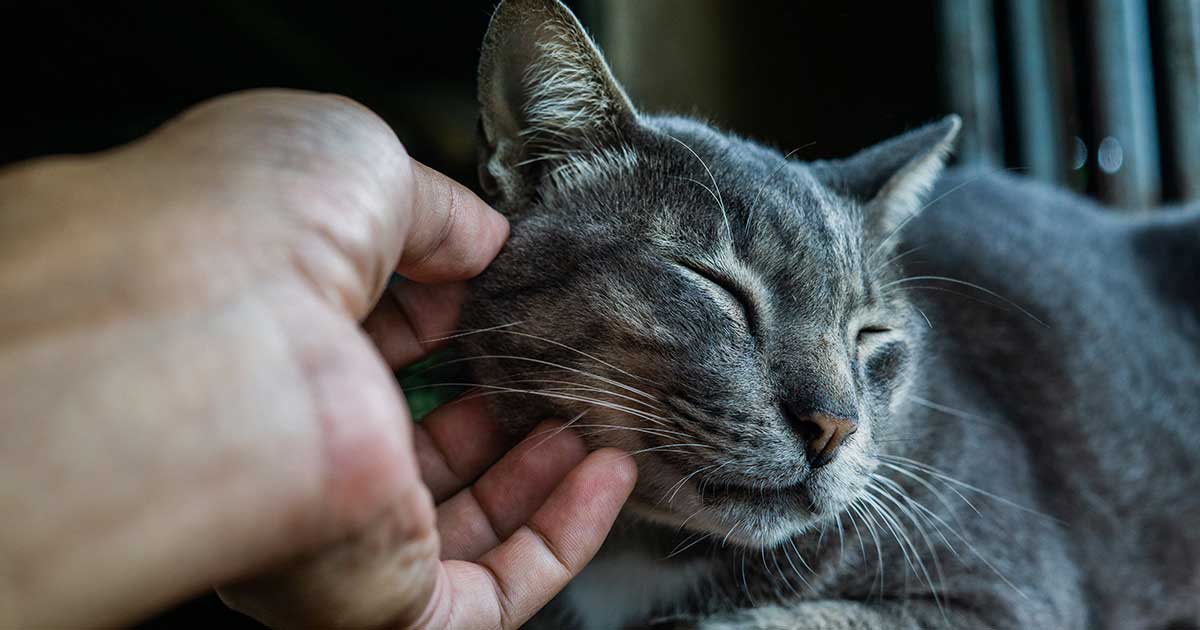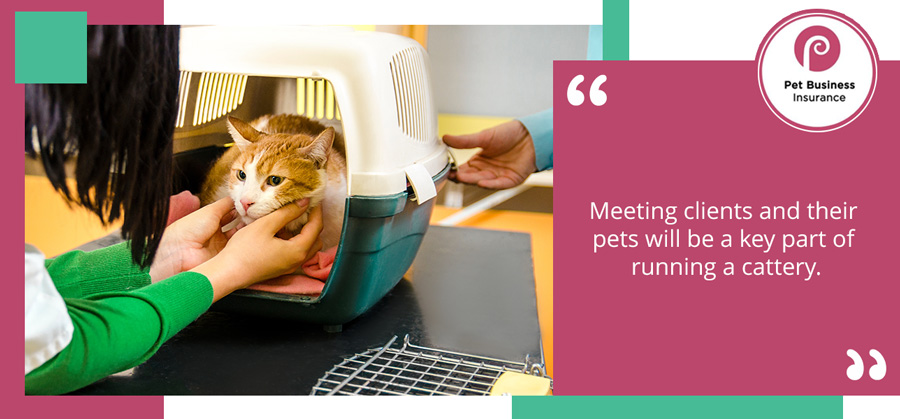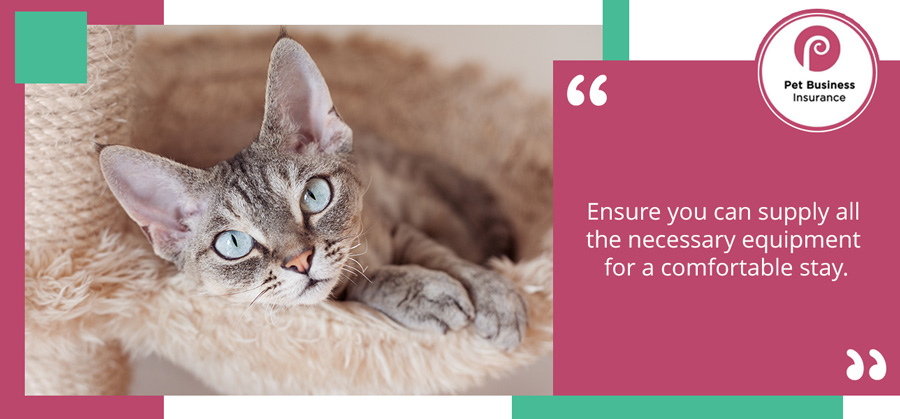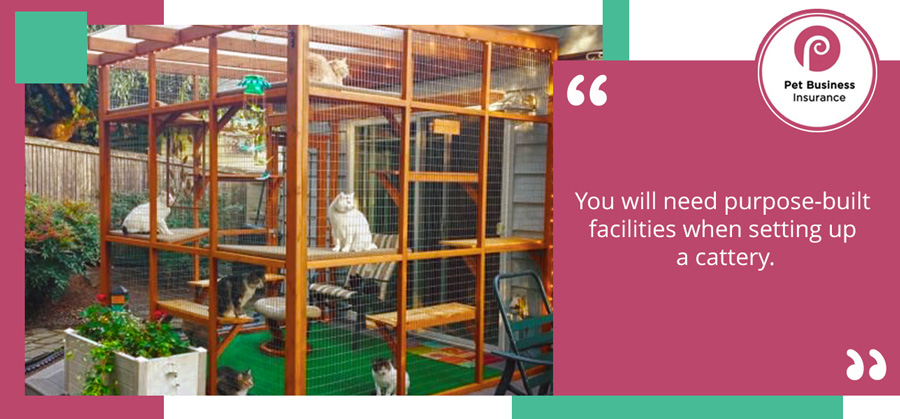
With around 11 million cats in the UK, demand for catteries will always be constant. That’s good news if you want to know how to start a cattery.
What facilities and equipment will I need to start a cattery?
You are going to need purpose-built facilities. When planning, you must consider how many cats you will house at any one time, and how big each pen will need to be to provide suitable housing.
You will also need an area where you can care for the cats, e.g. if you need to groom them or administer medication.

In addition, you will need to clean out the pens, deal with the arrival of clients, and handle the handover of pets.
The pens will need to be somewhere that is dry and appropriately heated and ventilated.
Equipment you may need can include:
- bedding
- litter trays
- feeding and water bowls
- toys and scratching posts
- a sink and grooming equipment
- first-aid kits
- security systems
- cleaning materials
You will also need a solution for taking customer payments and, to be both accessible and competitive, you should probably have a website and online booking platform.
All the above means that the initial set-up costs will not necessarily be cheap. With this in mind, you will need a business plan.
What should my business plan include?
First, decide what sort of cattery you will run and the services you will offer. You’ll need to consider what other catteries are in your area and the market sector you’d like to serve. For example: will you offer a high-end, luxury service or target a more mainstream client base?
Your business plan should include details of how many cats you can house, and at what cost. This will help you work out your projected income. The decisions you make about your services will also help inform your pricing.
You will also need to estimate how much equipment you need to buy and the cost of adaptations you’ll need to make to the premises.
The more accurate the financial side of your plan, the easier it should be to secure funding if you need it.
Don’t forget to include the cost of insurance, wages, and any training or marketing costs.
Finally, you should also include details of your marketing and sales plans. When detailing your strategy, consider the following:
- Will you have a website and social media presence?
- Will you pay for online advertisements?
- Do you intend to do a leaflet drop?
- How much money and time will it cost to execute this plan?

What are the legal requirements?
You will need a licence to run a cattery, even if you only house one cat. To obtain a licence you will need to be inspected by your local authority. They will check to see if you meet the required standards.
The Animal Welfare Regulations 2018 outlines the requirements for getting a licence. However, these rules may be applied differently across individual regions. Check with your local authority as to what is required before your inspection.
Before granting a licence, inspectors will consider:
- staffing levels (one full time member of staff for every 20 cats)
- the size and design of the pens
- the number of times the cats are checked on in a 24-hour period
- the temperature of the premises
Running the cattery
To deliver an effective service, you need to consider some basic staffing requirements, such as:
- how many staff members you will need
- what training the staff will require
- what training you will need
If you have employees, you may also need employment contracts and payroll systems. You’ll also need to decide who will run and manage your admin, marketing, and sales.
You will also need health and safety procedures in place, appropriate risk assessments, and an adequate emergency procedure. For example:
- What will you do if a cat needs emergency medical treatment?
- What happens in the event of a fire?
- How will you protect your premises against break-ins?
It’s also essential that you provide for the safety and wellbeing of the cats, your staff, and any visitors.

What insurance do I need?
Some form of pet business insurance will be essential, to protect your business in case something goes wrong. You can get insurance to cover a range of activities and eventualities. However, always make sure you have:
A good quality pet business insurance package will also cover you for a selection of other issues that can potentially affect your cattery business, such as:
- loss of your equipment
- loss of an animal
- loss of your boarding licence
Depending on how you operate, you may have need of some other insurance options. For example, if you employ anyone – even part-timers or friends volunteering their time – you will legally be required to have employers’ liability insurance.
Having business insurance not only provides you with peace of mind; it will also send a reassuring message to potential clients.
Reliable cattery insurance providers
Finding an insurer you can trust, and who understands your business, is an important element when deciding on cattery insurance. With Pet Business Insurance, you can be certain the cover you receive comes from established industry experts.
For almost two decades, we’ve specialised in the provision of insurance for a range of small- and medium-sized pet businesses.
Our insurance for kennel and cattery owners offers comprehensive coverage for your business’ needs. In addition to public liability and pet accidents and injury insurance, we also provide essential cover for a selection of risks including loss of your equipment, loss of your boarding licence, and loss of an animal, among others.
Of course, all the options your business may need, such as employers’ liability insurance, professional indemnity cover, or buildings insurance cover, can also be added to your package.
To discuss your cattery insurance requirements, get in touch with Pet Business Insurance today. Call 01284 736 874, or complete our online enquiry form.